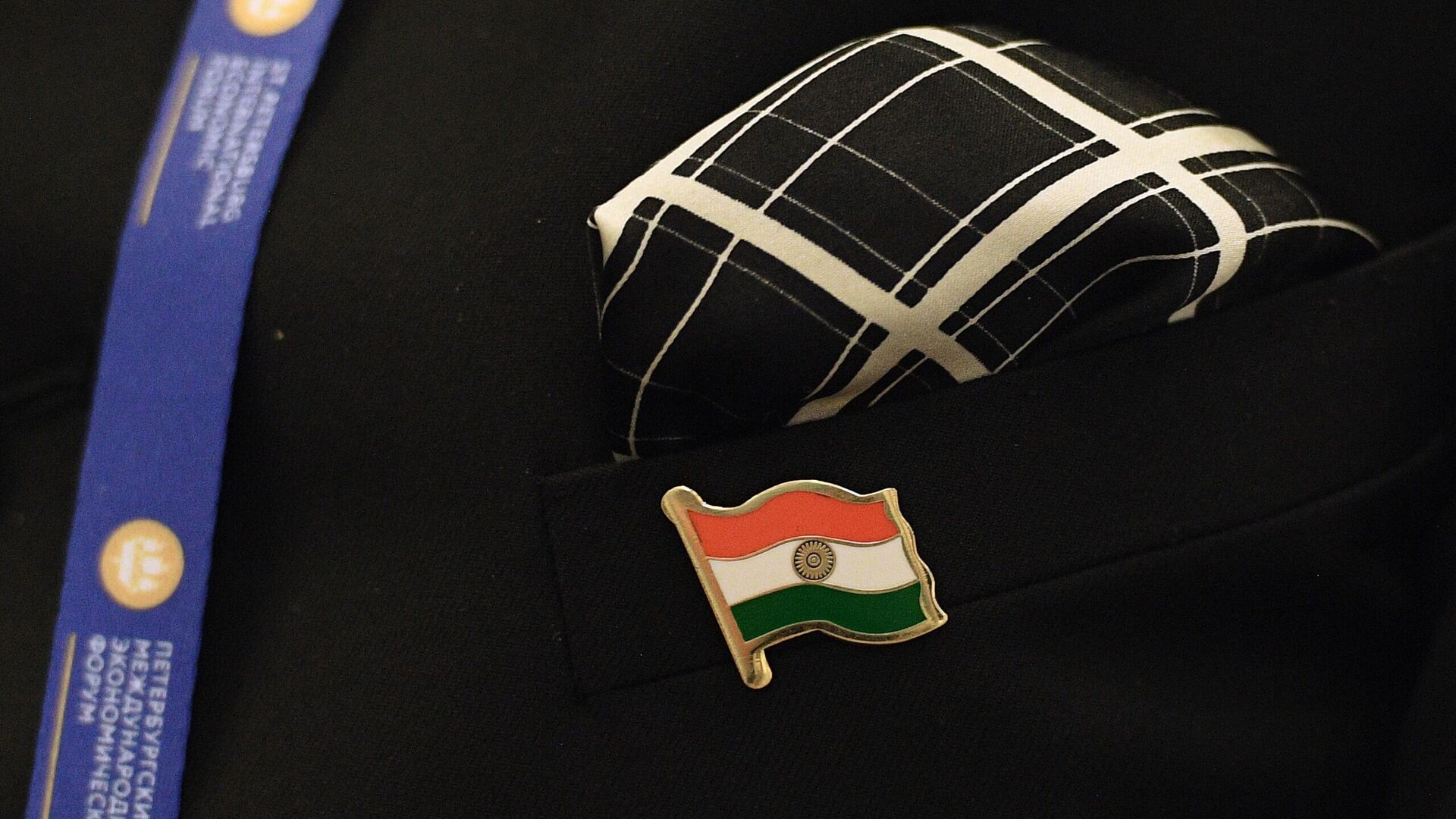https://sputniknews.in/20251118/would-india-eaeu-fta-blunt-the-impact-of-harsh-us-tariffs-10078036.html
Would India-EAEU FTA Blunt the Impact of US Tariffs?
Would India-EAEU FTA Blunt the Impact of US Tariffs?
Sputnik India
Finding newer markets is a top priority for India, with sectors like textiles and gemstones still reeling under the impact of severe tariffs imposed by the US... 18.11.2025, Sputnik India
2025-11-18T11:20+0530
2025-11-18T11:20+0530
2025-11-18T11:26+0530
sputnik opinion
vladimir putin
india
russia
new delhi
eurasion economic union (eaeu)
delhi
moscow
washington d.c.
narendra modi
https://cdn1.img.sputniknews.in/img/07e7/05/0f/1966536_0:133:2560:1573_1920x0_80_0_0_a245c574ae255ec0c7b5592c97c9307f.jpg
India's planned Free Trade Agreement (FTA) with the Eurasian Economic Union (EAEU) is emerging as a landmark breakthrough on the eve of President Vladimir Putin's upcoming visit to India for the annual India–Russia Summit, an expert has said.The EAEU—comprising Russia, Armenia, Belarus, Kazakhstan and Kyrgyzstan—is a significant economic bloc, and India's engagement with it has accelerated sharply. India signed the Terms of Reference (ToR) earlier, launching formal negotiations and laying out an 18-month roadmap for a fair, balanced and mutually beneficial FTA, he added.The bloc's vast market—reinforced by Russia, which accounts for nearly 92% of India's trade with the EAEU—offers major opportunities for Indian exporters, especially MSMEs, rare earth materials exploration, trade and processing, farmers and fishermen. This will help to promote Make in India programme and other bilateral and multilateral trade, the strategic affairs commentator stressed.Notably, this momentum appeared to have intensified ahead of the summit, with high-level talks in Moscow between India's Commerce Secretary Rajesh Agrawal and EAEU Trade Minister Andrey Slepnev last week. Discussions focused on market diversification, de-risked supply chains, and creating an enabling environment for goods, services and future investment partnerships.To operationalise cooperation, both sides agreed to quarterly regulatory engagements to address persistent hurdles such as certification requirements, anti-monopoly procedures, market listings and other non-tariff measures (NTMs) that impede Indian exports.Interestingly, the push for the India–EAEU FTA also comes against the backdrop of steep US tariffs on Indian goods, he reckoned.In 2025, American duties on several Indian exports—especially labour-intensive goods such as textiles, gems and jewellery, leather, and shrimp—rose to effective levels of around 50%, threatening to erode Indian competitiveness in its historically strong markets. With these tariff escalations creating external pressure, the Eurasian market offers India timely diversification and a path to strengthen export resilience, the Eurasian pundit emphasised.Nonetheless, the negotiations will have to navigate challenges, including bureaucratic delays in regulatory approvals, the need for infrastructure and logistics upgrades, and the geopolitical sensitivities linked to Russia's global position, he pointed out.Overall, the India–EAEU FTA represents a powerful strategic hedge and a transformative opportunity. As India prepares for the high-stakes India–Russia Summit, the emerging economic corridor signals a decisive shift toward diversification, balanced growth, and long-term trade stability, positioning Indian businesses to tap into a rapidly expanding Eurasian marketplace. Last but not the least, Eurasian integration and market is a trustworthy, time-tested and reliable long-term partner for both parties, the geopolitical analyst summed up.
https://sputniknews.in/20251003/indonesia-and-eaeu-complete-negotiations-on-fta-signing-expected-in-2025---finance-minister-9865522.html
india
russia
new delhi
delhi
moscow
washington d.c.
Sputnik India
feedback.hindi@sputniknews.com
+74956456601
MIA „Rossiya Segodnya“
2025
Pawan Atri
https://cdn1.img.sputniknews.in/img/07e6/0c/13/139630_147:0:831:684_100x100_80_0_0_8fa2b25903e7787fe6a2698552c167df.png
Pawan Atri
https://cdn1.img.sputniknews.in/img/07e6/0c/13/139630_147:0:831:684_100x100_80_0_0_8fa2b25903e7787fe6a2698552c167df.png
News
en_IN
Sputnik India
feedback.hindi@sputniknews.com
+74956456601
MIA „Rossiya Segodnya“
Sputnik India
feedback.hindi@sputniknews.com
+74956456601
MIA „Rossiya Segodnya“
Pawan Atri
https://cdn1.img.sputniknews.in/img/07e6/0c/13/139630_147:0:831:684_100x100_80_0_0_8fa2b25903e7787fe6a2698552c167df.png
vladimir putin, india, russia, new delhi, eurasion economic union (eaeu), delhi, moscow, washington d.c., narendra modi, donald trump, tariffs, free trade agreement (fta)
vladimir putin, india, russia, new delhi, eurasion economic union (eaeu), delhi, moscow, washington d.c., narendra modi, donald trump, tariffs, free trade agreement (fta)
Would India-EAEU FTA Blunt the Impact of US Tariffs?
11:20 18.11.2025 (Updated: 11:26 18.11.2025) Finding newer markets is a top priority for India, with sectors like textiles and gemstones still reeling under the impact of severe tariffs imposed by the US on the country's exports.
India's planned Free Trade Agreement (FTA) with the Eurasian Economic Union (EAEU) is emerging as a landmark breakthrough on the eve of President Vladimir Putin's upcoming visit to India for the annual India–Russia Summit, an expert has said.
"With both nations pushing toward an ambitious $100 billion bilateral trade target by 2030, the proposed FTA represents a strategic step toward building a stronger, smarter and more resilient India–EAEU economic corridor," Dr Sumant Swain, the Director of the New Delhi-based Eurasian Foundation, told Sputnik India.
The EAEU—comprising Russia, Armenia, Belarus, Kazakhstan and Kyrgyzstan—is a significant economic bloc, and India's engagement with it has accelerated sharply. India signed the Terms of Reference (ToR) earlier, launching formal negotiations and laying out an 18-month roadmap for a fair, balanced and mutually beneficial FTA, he added.
The bloc's vast market—reinforced by Russia, which accounts for nearly 92% of India's trade with the EAEU—offers major opportunities for Indian exporters, especially MSMEs, rare earth materials exploration, trade and processing,
farmers and fishermen. This will help to promote Make in India programme and other bilateral and multilateral trade, the strategic affairs commentator stressed.
Notably, this momentum appeared to have intensified ahead of the summit, with high-level talks in Moscow between India's Commerce Secretary Rajesh Agrawal and EAEU Trade Minister Andrey Slepnev last week. Discussions focused on market diversification, de-risked supply chains, and creating an enabling environment for goods, services and future investment partnerships.
To operationalise cooperation, both sides agreed to quarterly regulatory engagements to address persistent hurdles such as certification requirements, anti-monopoly procedures, market listings and other non-tariff measures (NTMs) that impede Indian exports.
"India has emphasised the urgent need for lowering NTMs before advancing into the deeper stages of FTA negotiations. This is crucial for sectors where India is aiming to enhance its footprint across the Eurasian region—pharmaceuticals, telecom equipment, engineering goods, leather products, chemicals, machinery, automobiles, and agricultural commodities. Given India's large trade deficit with Russia, driven largely by energy imports, expanding the export basket remains a key strategic priority," Swain underlined.
Interestingly, the push for the India–EAEU FTA also comes against the backdrop of steep US tariffs on Indian goods, he reckoned.
In 2025, American duties on several Indian exports—especially labour-intensive goods such as textiles, gems and jewellery, leather, and shrimp—rose to effective levels of around 50%, threatening to erode Indian
competitiveness in its historically strong markets. With these tariff escalations creating external pressure, the Eurasian market offers India timely diversification and a path to strengthen export resilience, the Eurasian pundit emphasised.
"The FTA, once concluded, is expected to reduce tariff barriers, streamline standards, ease customs procedures, and significantly cut transaction costs for Indian businesses. The agreement also aligns with India's intent to build resilient and de-risked supply chains, and both sides are exploring mechanisms for national currency settlement to reduce dependence on third-party currencies," Swain asserted.
Nonetheless, the negotiations will have to navigate challenges, including bureaucratic delays in regulatory approvals, the need for infrastructure and logistics upgrades, and the geopolitical sensitivities linked to Russia's global position, he pointed out.
Overall, the India–EAEU FTA represents a powerful strategic hedge and a transformative opportunity. As India prepares for the high-stakes India–Russia Summit, the emerging economic corridor signals a decisive shift toward diversification, balanced growth, and long-term trade stability, positioning Indian businesses to tap
into a rapidly expanding Eurasian marketplace. Last but not the least, Eurasian integration and market is a trustworthy, time-tested and reliable long-term partner for both parties, the geopolitical analyst summed up.



